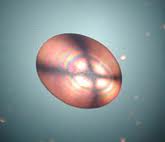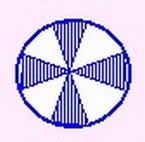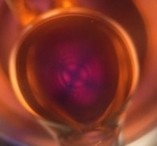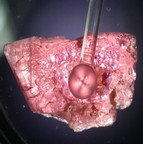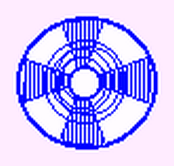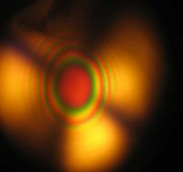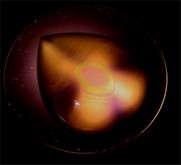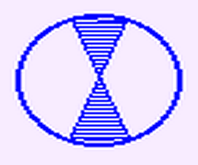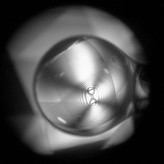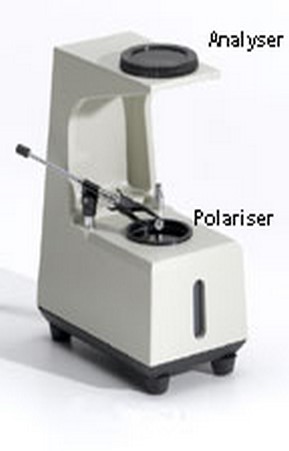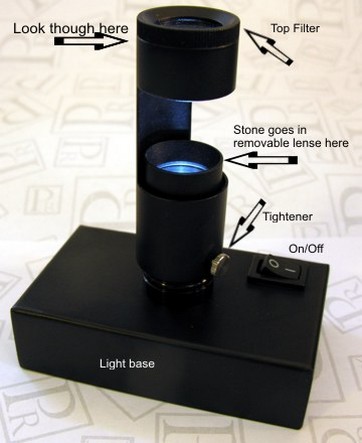








Copyright 2009-2014 Mahavir Gems. All Rights Reserved.
MAHAVIR GEMS

This site is best viewed on 1024 x 768 screen resolution using Mozilla 3.5 Browser
Polariscopes are a very useful, simple and important piece of gemological equipment. They are used to tell glass from gem materials synthetic spinel from all other materials, singly refractive from doubly refractive, crystaline from cryptocrystaline material, doublets and triplets from other gems, identify yellow Verneuil corundum (Plato test-see Liddicoat -GIA), determine quartz definitively from other materials, tell whether a transparent gemstone is biaxial or uniaxial in its crystal system.
Using the polariscope
To use the polariscope the top polarizing filter is turned to the extinction position (dark) allowing the least amount of light to pass through the two filters. The stone is placed between the two filters and rotated around a vertical axis. If it darkens evenly at exactly 90o intervals (4x per rotation) it indicates double refraction. It is important to test each stone in more than two positions as a doubly refractive stone may have one or two directions of single refraction (optic axes) in it. If it remains dark throughout its rotation single refraction is indicated. Cryptocrystalline material remains bright during rotation (jade, chalcedony) but some glass with textured backs does the same so it is best to use this test for transparent stones only. Note that large numbers of doubly refractive inclusions would have a similar effect. Brilliant cut stones should not be tested table up or down as they may reflect out all the light entering the table giving a false reading.
Anomalous double refraction may occur in singly refractive materials with internal strains such as diamond, garnet, synthetic spinel, amber, plastic, opal and glass. The extinction patterns here however do not occur at precisely 90o intervals although rarely they may be close. Plastic and amber may show bright interference colours. Glass may show a characteristic cross like shadow, or two approaching bars which almost form a cross during rotation. Synthetic spinel shows a characteristic 'tabby' extinction, a sort of fine, mottled cross hatching of parallel silk-like lines which change during rotation. In a doubly refractive stone interference colours will appear when one is within a few degrees of an optic axis. To produce diagnostic interference figures one obtains the optic axis position and placed a condensing lens above the stone or in contact with it. This can be a 10X lens (viewed from 18" or so distance), a drop of viscous liquid or a strainless glass sphere. This will divulge whether the stone is uniaxial or biaxial.
The characteristic interference figure for uniaxial gems is:
interference figure for uniaxial gems
Quartz has a special variety of this uniaxial figure called a bullseye uniaxial figure and this is, if seen clearly, diagnostic for quartz. The centre circle is often red.
interference figure for BULLS EYE uniaxial gems
Biaxial figures vary somewhat but are quite distinctive having usually only two arms or brushes from a centre or oval:
interference figure for biaxial gems
It may be noted that cabachon gems or beads often need no condensing lens as they function as one themselves. Interference figures may be resolved more easily if the gem is immersed in water or bromoform (toxic). Be sure that the transparent container for your liquid does not itself add shadow lines to your image, especially if merely testing for double refraction. Interference figures may be used to distinguish between: moonstone (orthoclase) and chalcedonic quartz which shows no figure resolution, topaz and tourmaline, andalusite and tourmaline, corundum and chrysoberyl.
